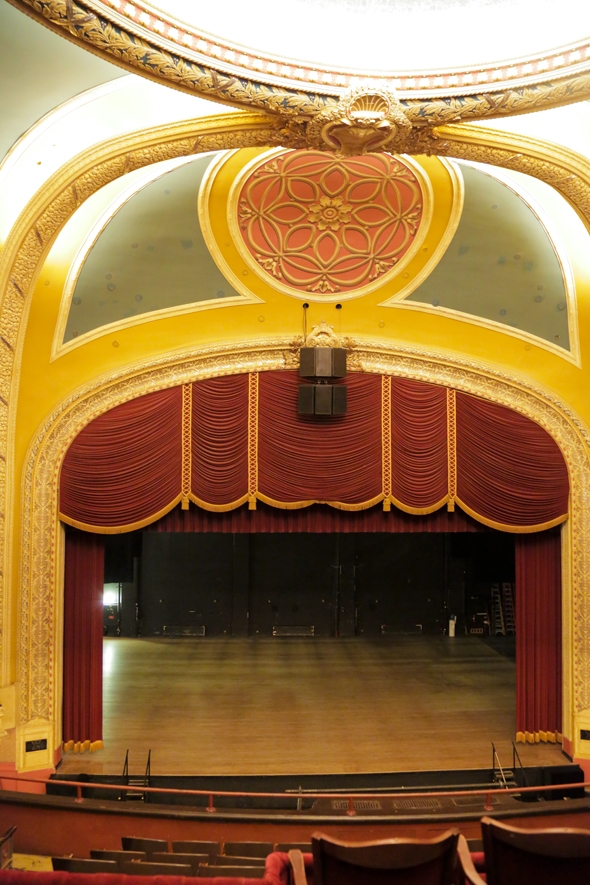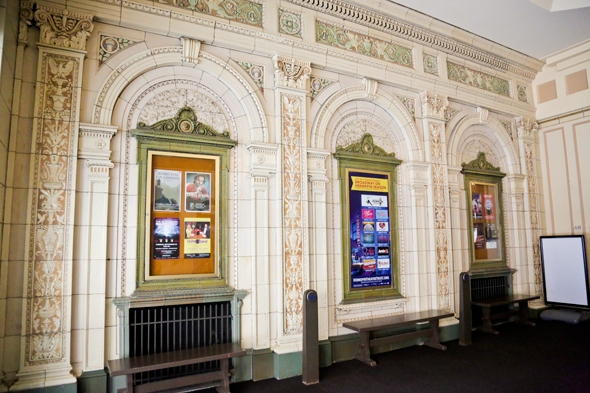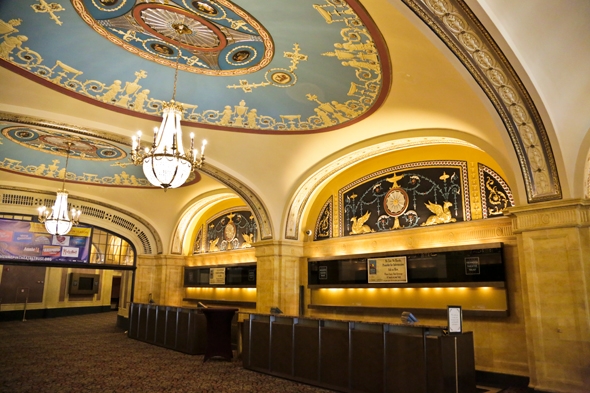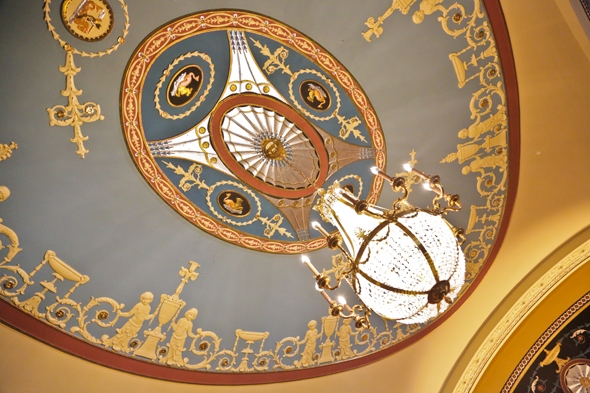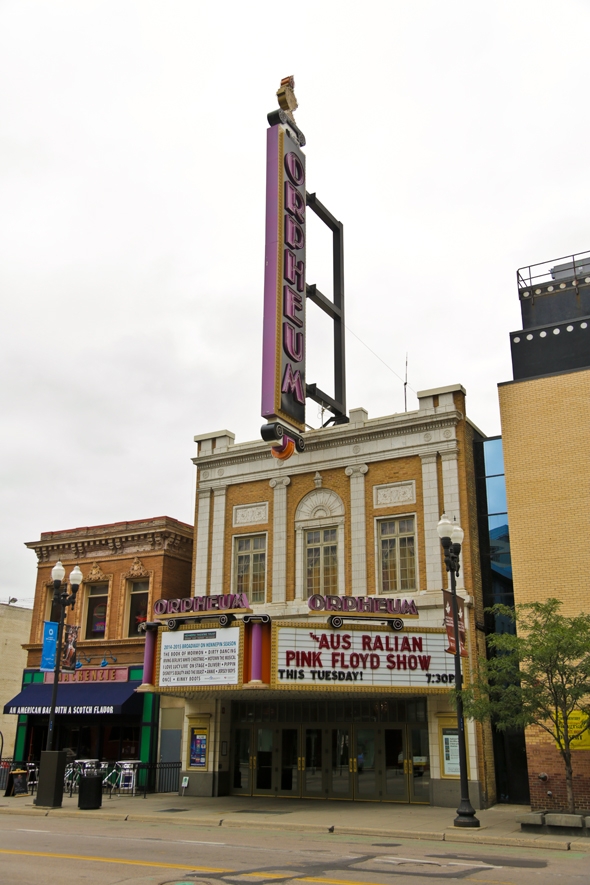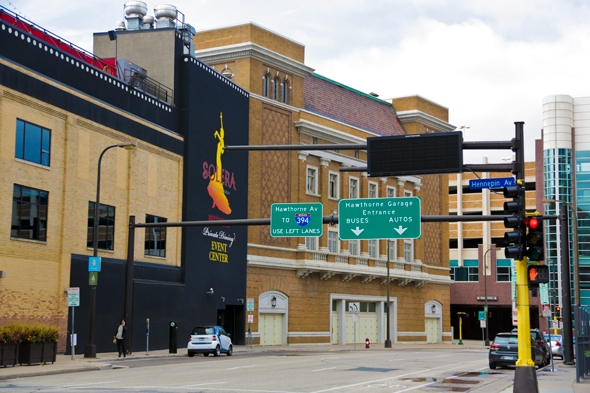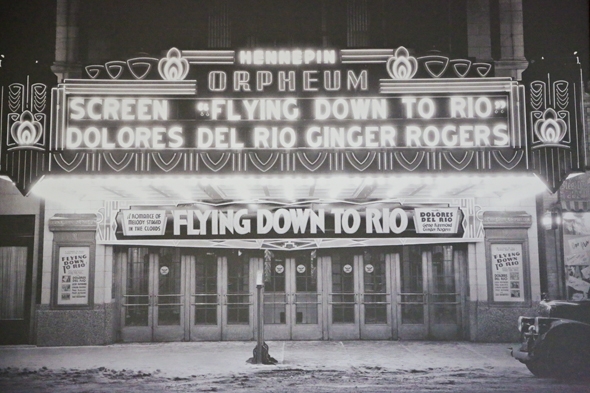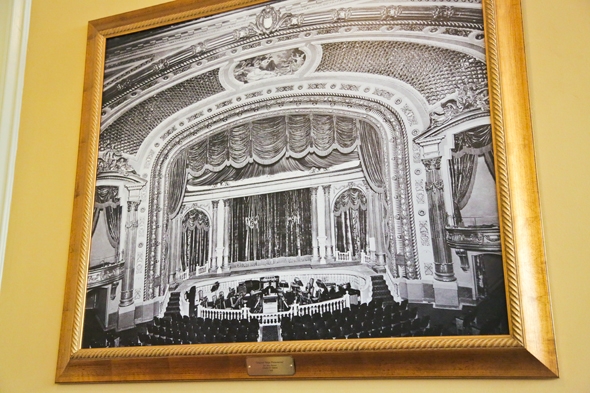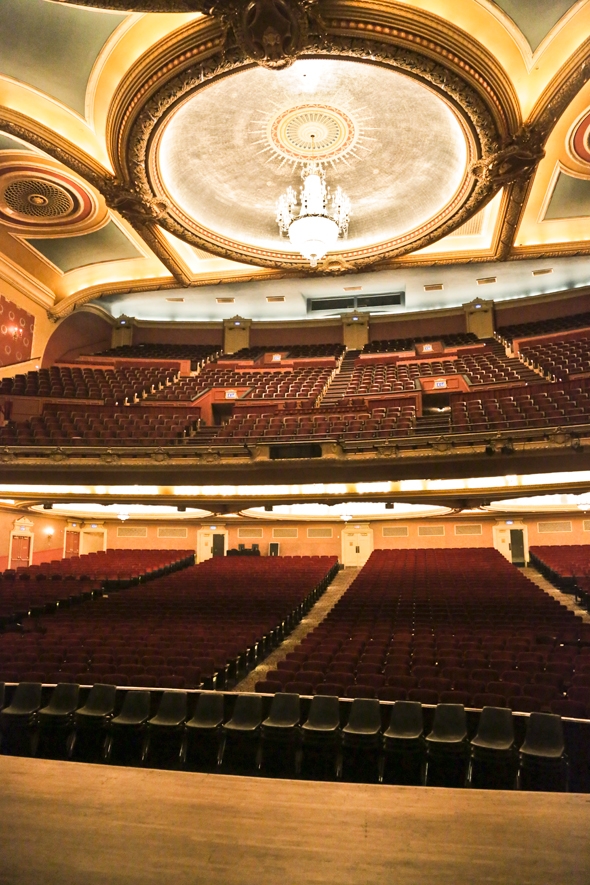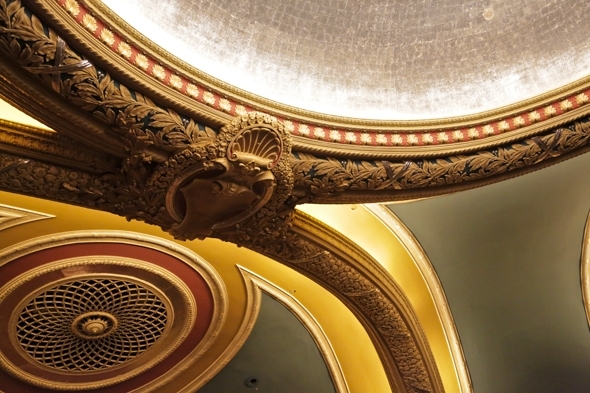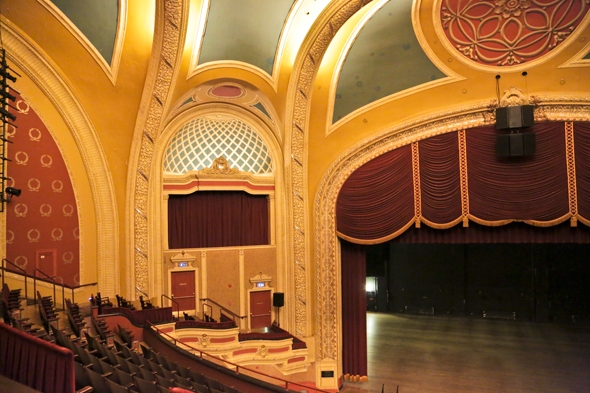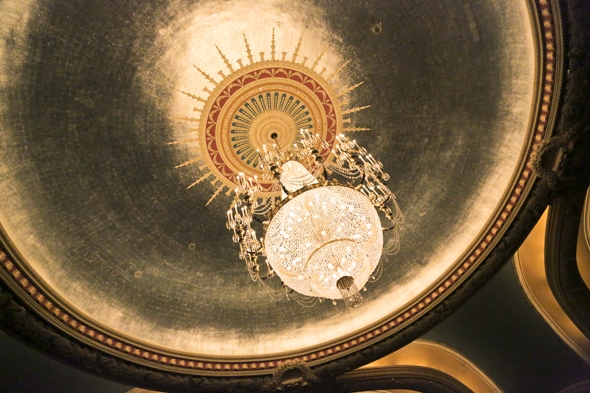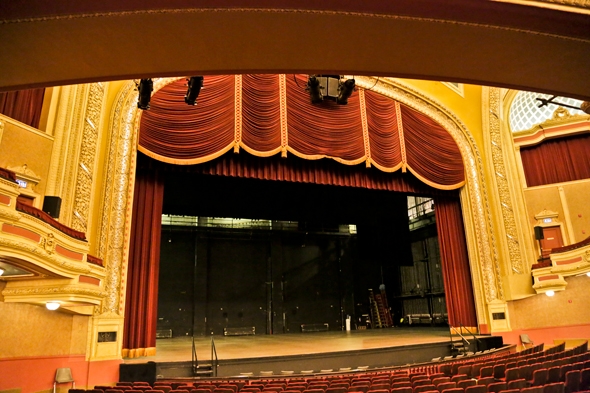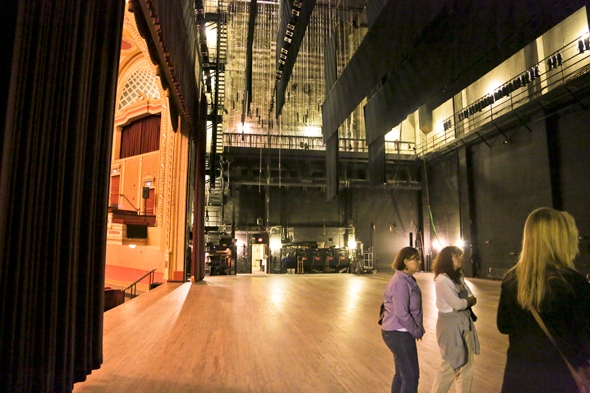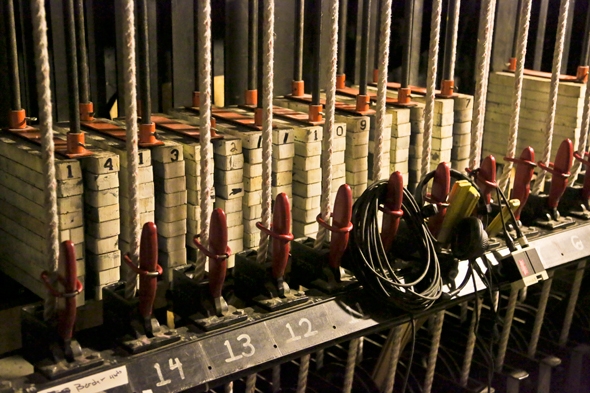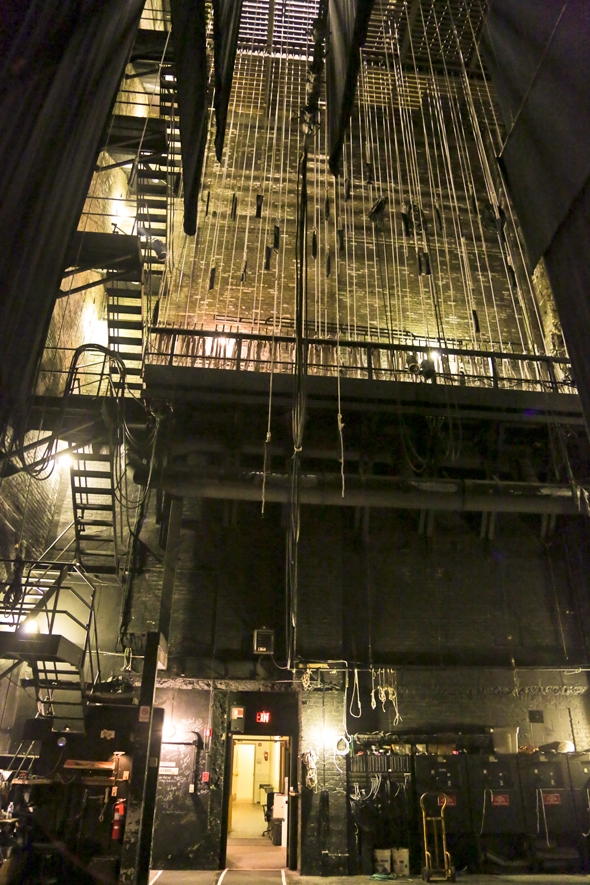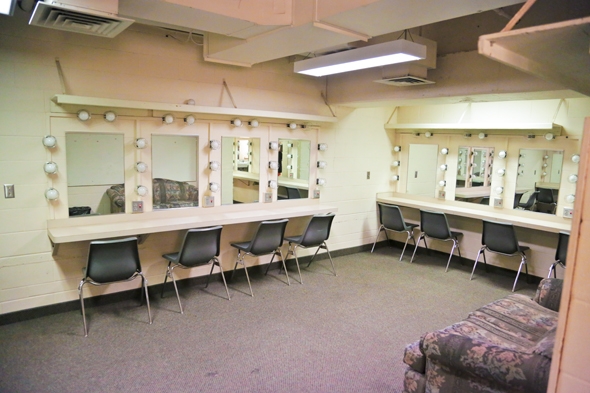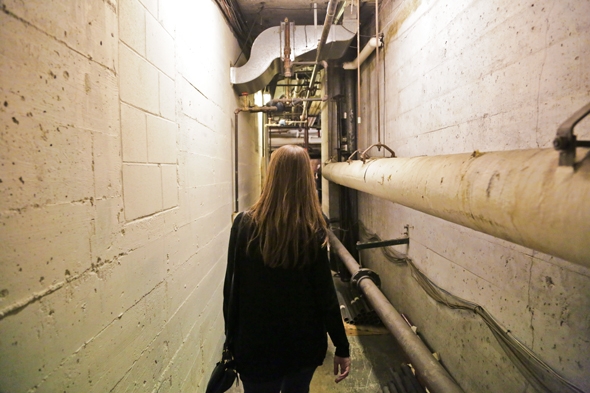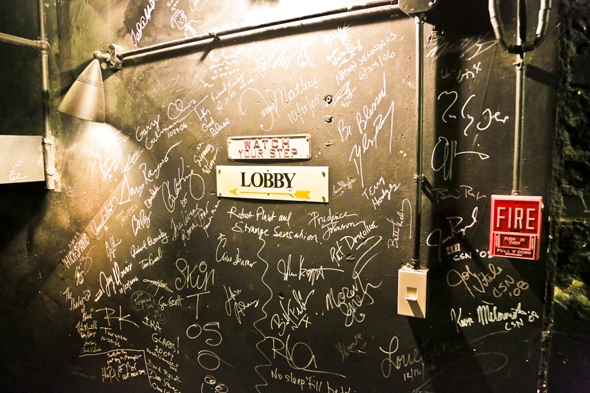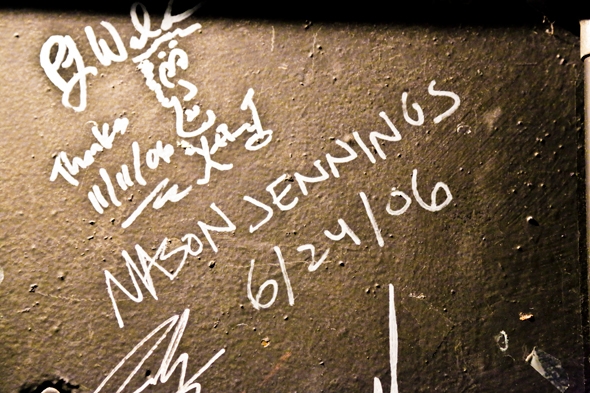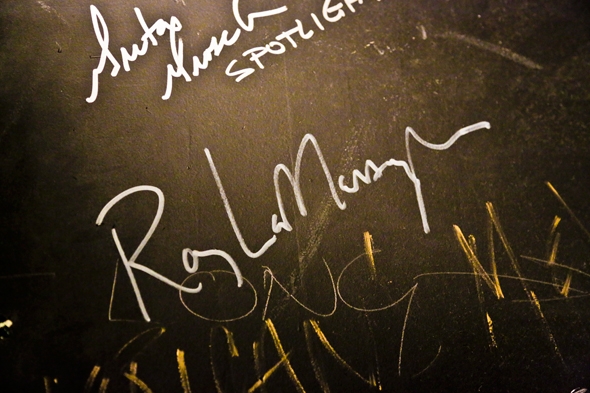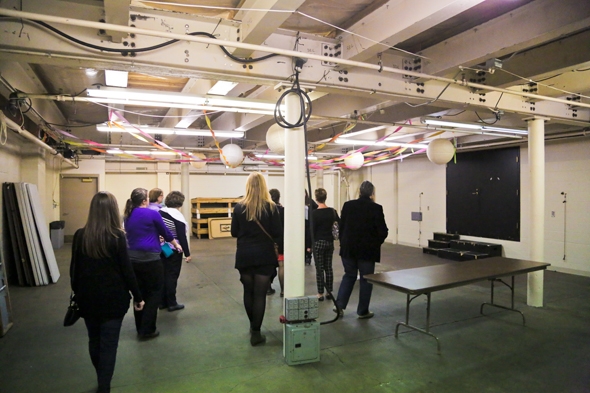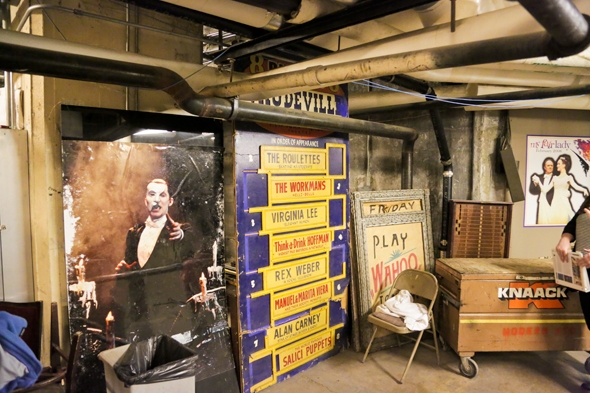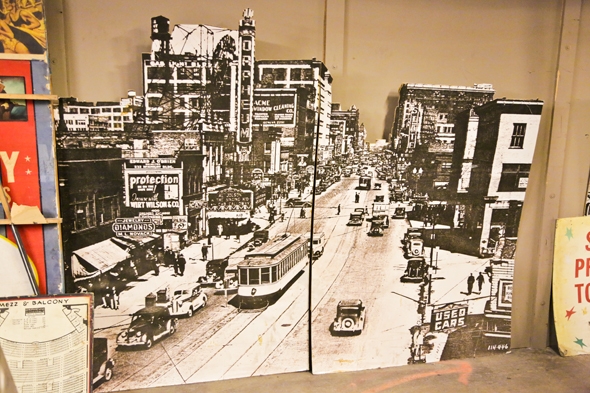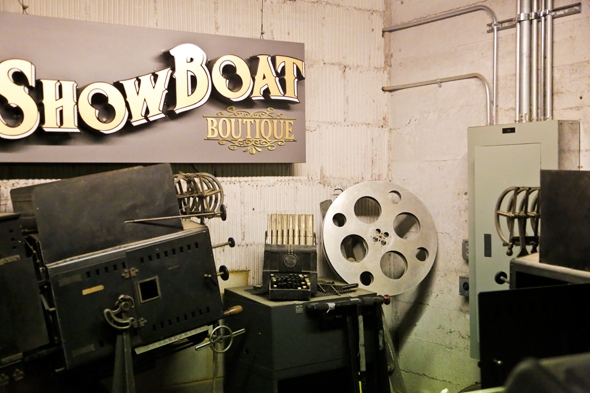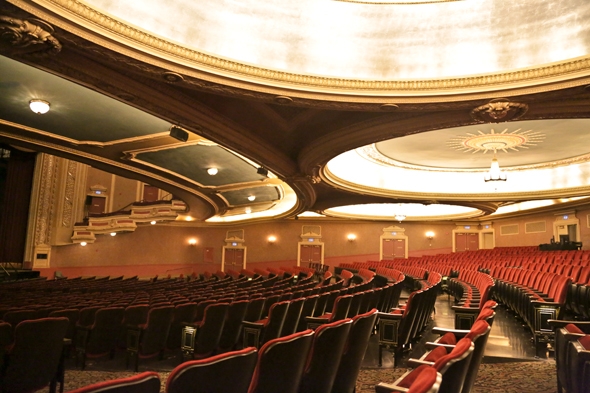
21 Oct A Peek Behind the Scenes at the Orpheum Theater
One fun aspect about moving away from home is that when you return, you have a new appreciation for many things that you would have ignored previously. Recently, we have been exploring the history of the Twin Cities, and one of my favorite outings was taking a behind the scenes look at the Orpheum Theater during a Historic Theater Tour. Minneapolis has a surprisingly large art community, which consists of everything from music and theater to culinary treasures, artist communities and museums. In fact, it is only second to New York City for the number of theater seats per capita—in other words, the art and culture scene in the city is thriving and we are so lucky for that. We have only seen two shows at the Orpheum, The Phantom of the Opera and a concert by Mason Jennings, but I can tell you after the tour, I definitely want to head back for another show!
The Orpheum Theater is one of the four theaters that belongs to the Hennepin Theatre Trust, and three of these museums are still located in their original historic buildings. Honestly, I was expecting the tour to be interesting, but nothing too special, but it turns out that I was completely fascinated by the entire experience. It really gives you a different perspective, and you get a look into theater that a regular audience member rarely gets to see. I have always been a fan of theater, but I have an even greater appreciation for it now.
As with many of the spots we’ve been exploring recently, the Orpheum Theater opened its doors in the 1920’s. The Orpheum opened its doors on October 16th, 1921, and cost $1 million dollars to build. The marquee on the outside of the building is 40 ft tall and just the torch on the top is 10 ft tall alone. As we learned at the Neon Museum in Las Vegas, signs like this are huge when put down on our level!
Also, if you look at the building from the front along the street, the theater looks very tiny, but looks can be deceiving and this is certainly the case. The theater actually rests in a building behind the main entrance, and it has a large side exit that helps clear the building and thus shows are turned around on a quicker basis.
The Marx Brothers were the first act to perform in the Orpheum and they ended up drawing in over 70,000 patrons during their weeklong run. Back in this time there were 40 theaters along Hennepin Avenue, one of the cities main streets. TV’s weren’t mainstream at this time, so the theaters ran shows throughout the day to provide a constant stream of entertainment. Theaters showed everything from Vaudeville to orchestra and big bands to movies. Tickets cost $0.47/adult and $0.09/child and there was even a daycare available on site. I can only imagine how great the entertainment options would have been at that time—Micah and I are always intrigued by the roaring 20’s and hearing the history of the theater only amplified that!
Theater wasn’t always the most profitable business model around, especially when the manager wanted to pay his performers a fair wage but still keep ticket prices low enough for the common folk to enjoy. The manager actually had an escape route from his office so he could make a run for it when creditors came looking for him. He also allowed jobless men to usher without pay so that they could make job contacts while they worked and hopefully land a job!
In the 1950’s, Ted Mann purchased the theater and it was sold once again in the 1980’s—this time the new owners were Robert and David Zimmerman. Robert is also known by his stage name, Bob Dylan—I think a few of you may know him better by that name! They only owned the theater for 8 years when the state purchased it in the 1990’s. After the state acquired the theater, they remodeled and restored the building close to what it would have looked like in the grandeur of the 20’s.
One of my favorite parts of the tour was learning about the various elements of the building and getting a peek behind the curtain. When the theater was built, there were no microphones or sound systems, so the seats were arranged as close to the stage as possible. This means that the seat farthest from the stage is only 138 ft away, which is pretty close when you are sitting in a theater of 2,550-2,600 seats.
The gigantic 15 ft chandelier in the middle of the room is not original, but it is sure spectacular. In order to clean the chandelier, they have to remove each strand of crystals so they can be washed by hand. It’s a pretty incredible process and you can watch a timelapse of the process if you have any interest.
Remember when I said that Minneapolis was a hot spot for art? Well, when the state remodeled the theater they actually had Andrew Lloyd Webber consultants come in to make sure the updates would make the theater a great fit for all of the best plays out there. The stage was extended by 20 ft, and in order to do this the city actually had to move the street behind the building. Some of the other renovations consisted of new seating, electrical updates, an update to the dressing rooms, an expanded orchestra pit, a new loading dock and support work on the ceiling for shows such as the Phantom of the Opera which has the moveable chandelier as part of the set.
Throughout the years, many famous productions have originated or previewed at the Orpheum Theater. The Lion King was actually built and designed here before it moved to Broadway in New York. We saw The Lion King in Miami last year, and it was amazing, so it was fun to see the spot where it was actually created!
Our tour took us through all the crucial parts of the theater—we got to sit in the upper level as well as the lower level, we went on stage for a peek behind the curtains, we ventured into the dressing rooms and under the stage.
There is a wall behind the stage where performers have signed their names through the years—we picked out many names we recognized and even found Mason Jenning’s signature from the exact concert we attended there in 2006.
The area underneath the stage can be used for a variety of things, but typically it is used to store costumes or as a place for the performers to relax. During The Lion King, Pride Rock sat in the middle of the room until it was raised up to the stage, and during the Phantom of the Opera the room was filled with an entire wall of wigs.
One spot I was not expecting to find was the little museum area—this section is filled with memorabilia from the theater throughout the years. It’s almost like a walk down memory lane with the posters and props from past shows.
Although it could be listed, the Orpheum is not on the national historic register. The state tries to keep the theater as authentic as possible, but they still want to be able to be a competitive location for the best plays around the country. If they turn the theater into a registered historic spot, they will have limited options for updates and accommodations that a particular show might require.
The entire tour was extremely interesting and informative, and as I said before, I definitely want to head to another performance there soon. I love getting an inside look into how things are created, and I can say this was no exception!
Do you like theater? Have you ever taken a tour of a historic theater?


